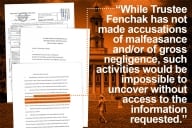You have /5 articles left.
Sign up for a free account or log in.
The history of American higher education since 1940 is full of dramatic changes -- the growth of the modern scientific enterprise, desegregation, the impact of the GI bill, the campus unrest of the 60s, and so forth. Wilson Smith and Thomas Bender set out to tell that story with documents -- from both establishment figures and their critics -- in American Higher Education Transformed, 1940-2005, just published by the Johns Hopkins University Press. The book is a sequel to earlier work by Smith and Richard Hofstadter examining earlier periods in the history of American higher education. The new volume includes the Supreme Court decisions that upheld affirmative action and that dealt blows to faculty and graduate student unions; essays by Adrienne Rich and Lani Guinier; the Port Huron Statement; Allan Bloom and his critics; and the presidential report that led to the growth of community colleges.
The documents were selected and are each introduced by Smith, professor emeritus of history at the University of California at Davis, and Bender, professor of history at New York University. Bender responded via e-mail to questions about the new collection.
Q: Your documentary history follows the work of Hofstadter and Smith. Did you aim for a similar approach, or did the more modern era call for a different strategy at selecting documents?
A: The idea was indeed to work within the earlier framework, both in format and in the kind of documents selected, which we largely did. But starting with that frame impressed upon us the magnitude of the revolution in higher education in the postwar years. It was easily equivalent to the late 19th century transformation that Hofstadter had called “the revolution in higher education,” but it was more widely ramifying. We had to incorporate those new dimensions of the higher education discourse, which meant attending to the more diversified constituency for higher education and the multitude of voices participating in the discourse.
Q: Would you describe the process of picking selections to include and editing them?
A: I came into the project late. Smith, who envisioned a successor volume to the two he and Hofstadter had done, had already collected a substantial number of documents, mostly through the 1980s. Recognizing the remarkable expansion and democratization (incomplete but real) meant many more and more diverse documents. We tracked the discourse and located documents in a variety of ways—mining existing scholarship, memory and our own files, and research on themes we thought were important. I should note, however, that as we were documenting the national discourse, our collection focused on public documents, not archival material. We were committed to providing more than snippets. Many documents are the whole document, though, of course, many are excerpted and edited down, but always we tried to allow the writer to lay out her or his argument. The earlier volumes had assumed that the American story was that of liberal education, and we wanted to continue that emphasis. Hence there is very little reference to professional and vocational education. In our period, however, the centrality of liberal education could no longer be assumed. As a result we were documenting not only a conversation about how to best accomplish the goals of liberal education, but also how to sustain it in a democratic context, with a much larger constituency with more varied ambitions for education and for themselves.
Q: You have a mix of establishment voices and outside critics. Do you think of the voices in the volume talking to one another or past one another?
A: Each section of the book is based on our sense that there was a common question or issue being addressed, albeit sometimes quite differently. While the voices are mixed, and rightly so, I think they are in one conversation, albeit one that itself is often in flux. Sometimes the speakers themselves did not realize how much they shared. For example, I would argue that Mario Savio and Richard Hofstadter -- who would be contrasted as outsider and establishment figure -- reveal remarkably similar hopes for the university in the article Savio wrote about the Free Speech Movement at Berkeley and Hofstadter’s commencement address at Columbia in 1968.
Q: How did the tone of documents change during the period you studied?
A: This is an interesting question. I would say that there was a sense of anticipation at the beginning, looking forward to new challenges related to the position of the U.S. after the war. Their sense was that higher education would (and should) be moving to the center of American society. Hence it must be modernized, democratized, and expanded to meet that challenge. This is clear in both the curricular documents (“The Red Book”) and in the President’s Commission on Higher Education, which was concerned about exclusion based on race and class, or Vannevar Bush’s vision for science. Midway the complexity and tensions, contests and constraints produced a very different tone. There is little self-confidence toward the end of the story, the result of a sense of being displaced from the center.
Q: Are there a few selections that hold particular meaning for you? Which ones?
A: Impossible question! The whole is much more than the sum of its parts, which is why it is so long, with so many documents. That said, I guess I favor some of those documents that might not be widely known without their reprinting: Margaret Rossiter on women in science and W.K.H. Panovsky on “big science”; Allan M. Cartter and William Bowen on faculty supply and demand -- and why Cartter, who was right, was ignored, and why Bowen, who was wrong, was embraced; or Adrienne Rich and Lani Guinier on women teaching women and underrepresented students; William Cronon on liberal education and Sidney Hook on Allan Bloom’s failure to grasp the fundamental aims of liberal education; and, finally, the fascinating economists’ argument for tenure by Michael McPherson and Gordon Winston.








